Snorkeling: how to choose a mask, snorkel, fins and swim underwater correctly
The underwater world beckons with beauty and mystery. Snorkeling is an opportunity to look into this magical world of fish, coral and absolute blue. In this article we will talk about snorkeling, where both technical and psychological aspects are covered. From it you will learn how to choose a snorkel and mask, whether you need fins and a wetsuit, where and when it is better to dive and how to do it to get maximum pleasure. I will also cover the issue of underwater photography and videography.
If you are attracted by the desire to see rivers, lakes, seas and oceans from a non-standard angle, and not just lie on the shore under the sun – then this article is definitely for you, do not be lazy to read, and learn the charm of snorkeling!
What is snorkeling
It’s a real thrill, believe me! It is about snorkeling in the water, without diving. This allows snorkeling to be practiced from childhood, without any special training.
At the same time, many beautiful and interesting inhabitants do not live deep, and the transparency of the water allows you to view them from the surface. With minimal effort, a swimmer can observe the underwater world for long periods of time, especially if the weather cooperates.
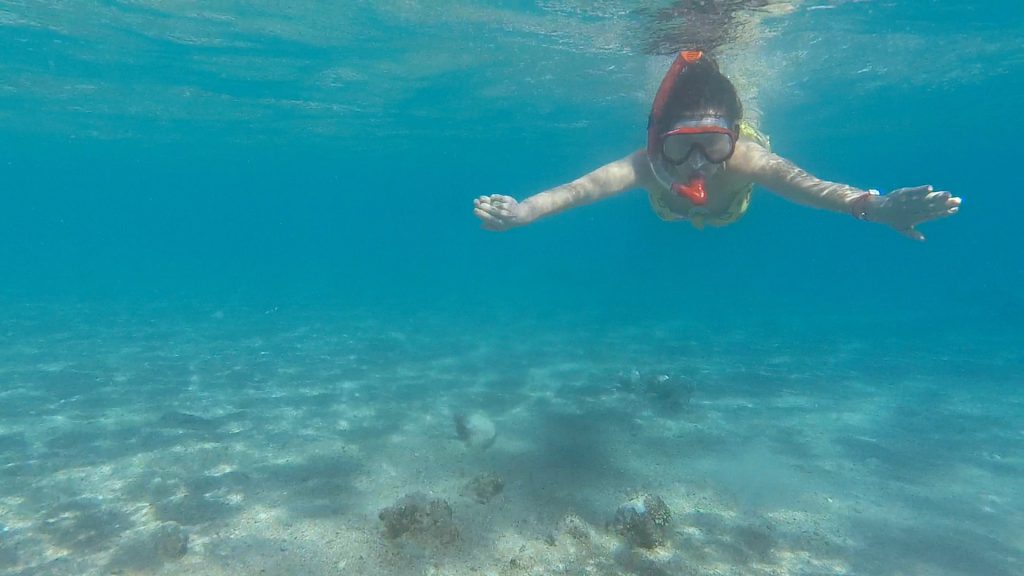
Personally, I swam and snorkeled in my distant childhood in the Sea of Azov. Then it was forgotten, but in 2018, on the Red Sea in Sharm el-Sheikh I discovered this activity anew, already from another side. And not a bit regretted! Even near the shore I met such beautiful and colorful inhabitants of the sea that I wanted to come back and swim there again!
Equipment selection
For comfortable snorkeling you will need quality equipment. You can’t go anywhere without it, and you should approach the choice thoughtfully. Experience has shown that even a Chinese mask and snorkel is hard to find in Ukraine, let alone something more decent. The prices are huge and the quality is low… However, you can find a way out.
How to choose a mask
I want to warn you against buying the most expensive or cheapest equipment. So, a mask for 50$ and above is not necessary for a beginner. It will be a waste of money, as well as cheap plastic ones from China, which are sold in placers at the market or in Egypt for 1 – 2 dollars per dozen pieces.
Good masks start at $10 and up. And a common choice is to find a silicone mask (much better face fit) with tempered glass (this is 99% of masks on the market) that will fit your face well.

It is the fit of the mask to your face that can be problematic. The straps make it adjustable for both adults and children, but different masks fit differently on different types of faces. Therefore, if possible, buy a mask in person, not online. The only exception may be masks with dioptrics (for nearsightedness), which can’t be found, but enterprising Chinese offer variants for 17 – 25 dollars.
When choosing a mask, you need to place it tightly on your face without putting it on your head, then inhale through your nose and release your hands. If the mask fits well, it will stick to the vacuum. In such a case, no water will get under it if it is worn properly.
Recently there have been masks for the whole face, you can often find them on the Internet, both branded and cheap Chinese knockoffs. In my opinion they are extremely uncomfortable and I do not recommend using them. Moreover, I have not seen a single professional who favors them.
How to choose a tube
Snorkeling is much easier. You can choose one online, or even easier – buy it together with the mask.
Make sure the mouthpiece is silicone and fits your mouth. You should be able to hold it in your mouth effortlessly without biting your teeth.
In addition, it is not unreasonable to take care to have a “float” at the top tip of the tube, which will protect against water ingress by an accidental wave or splash.

How to choose fins
First of all, you should decide whether you need fins at all. If you plan to go to the sea for a week and swim 10 minutes a day in the coastal strip, they will only get in the way.
On the other hand, if you like snorkeling and will swim far away or from a boat, then it is advisable to get flippers. Flippers add speed and maneuverability, creating the effect of a “motor” behind your back.
Prices for good fins start at $20 and up. You need medium stiff fins, made of rubber or silicone combined with plastic. Select them on the spot, trying on the size of the foot. And pay attention to the fact that they do not fall down, but also do not rub your feet, otherwise you can forget about comfortable swimming with fins.
It is worth the fate that fins add inconvenience when entering the sea – you will have to stare back until you come to a sufficient depth to start swimming.
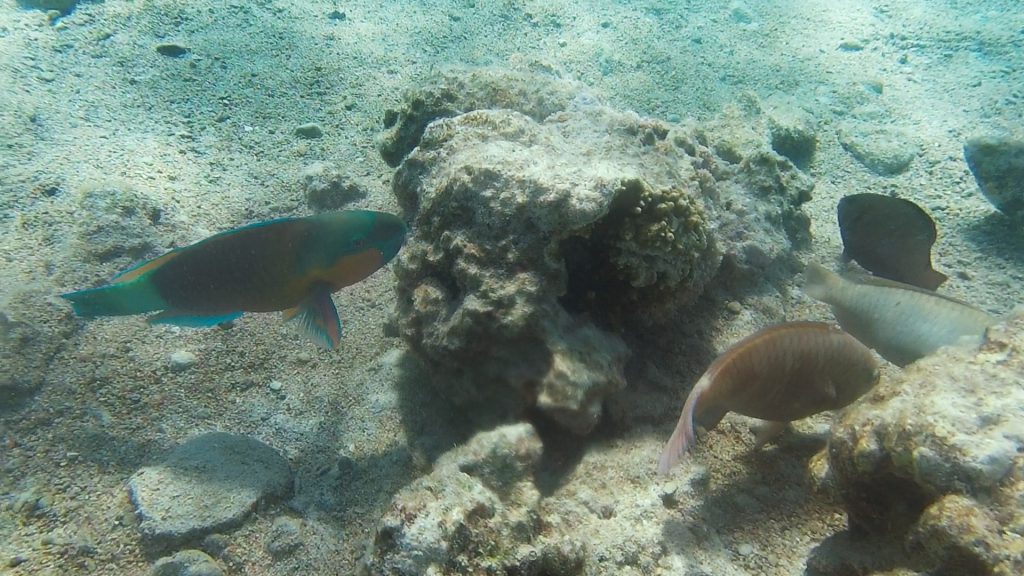
How to choose a wetsuit
If you plan to be in the water for a long time, it is advisable to buy or rent a wetsuit. This is a separate topic that can be discussed: there are different kinds and types of suits.
I will try to make a brief conclusion from everything I have studied. It is desirable to take a one-piece, and in summer – enough with a short sleeve (however, long sleeves also protects from contact with jellyfish). It should be a “wet” wetsuit, 2 – 3 mm thick.
If the water will be cool or cold (temperature below +15), something serious will be needed. Take a long sleeve and a thickness of 6 – 8 mm.
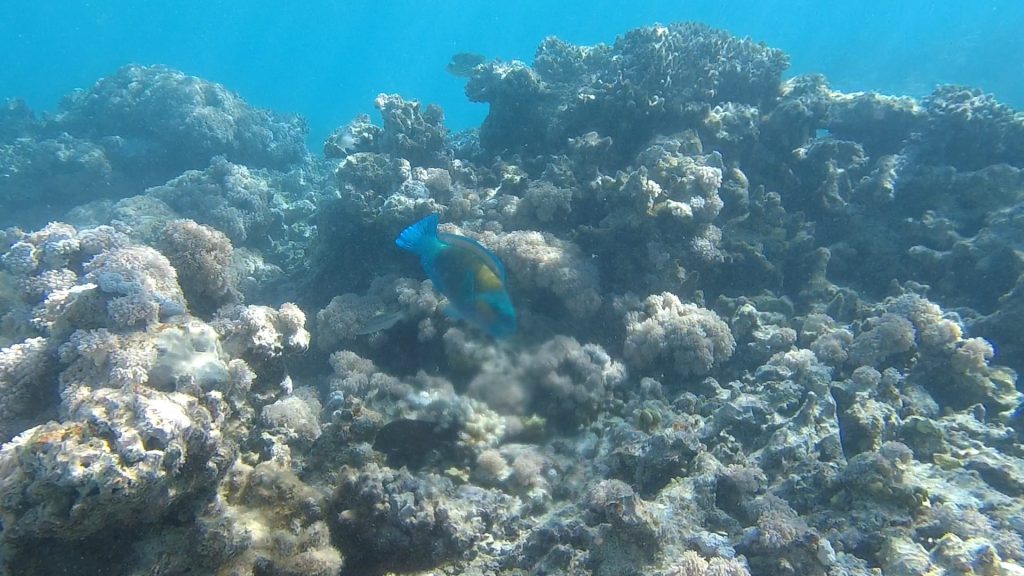
You should also buy a wetsuit in a store, measure and take only the one that will fit well. If the suit becomes loose-fitting, the effect will be lost and it will be of no use.
A wet wetsuit works on the principle that during a dive, water gets underneath and then circulates, heating the body and keeping it warm. Such suits are cheaper than dry or semi-dry suits (somehow wine immediately made me want a good one…).
Often wetsuits or lycra suits are worn to avoid getting sunburned (which is easy). In such cases, you don’t have to spend money on expensive suits, but buy a Lycra training sweatshirt (so-called rashgards). They do not warm, but will protect you from burning, as well as from some jellyfish and coral. It is also possible to use 120-denier leggings.
How to learn to snorkel and scuba dive
Swimming with a mask is a pleasure. The fact is that the reason why people do not stay on the water well, besides panic (but this is already for a psychologist), is tense neck muscles. As soon as you put on the mask and submerge your face under water, the neck muscles relax and it becomes much easier to lie on the water.
First, put on the mask and tube correctly. Make sure that no hair gets under the silicone, as this will cause the mask to leak. In addition, take into account that underwater you should minimally tense your facial muscles (do not smile, wiggle, etc.), as this will also lead to water penetration, which is unpleasant and painful (especially in salty water bodies).

Then go shallow so that the water is higher than waist-deep, but no higher than your chest and you can stand firmly on your feet at any time if you suddenly panic.
Take a deep breath, hold the mouthpiece of the tube in your mouth and exhale sharply. This clears the tube of water or sand, if any remains. Then inhale again at full chest and lie down horizontally on the water.
It is important to realize that water, especially salt water, will hold you up. Lungs filled with air are like a life preserver, keeping you from going under.
Relax as much as possible. Don’t strain your neck, don’t lower your butt. If the water is not very salty – you will have to start swimming right away.
Use breaststroke – lightly flip your feet up and down like flippers, and swing your arms from your chest to your sides. This type of swimming creates a minimum of noise and splash to deter underwater life and does not require you to raise your head above the water.
Start by swimming along the shore so that you are not caught off guard by the depth. Make sure you have a good swimmer nearby.
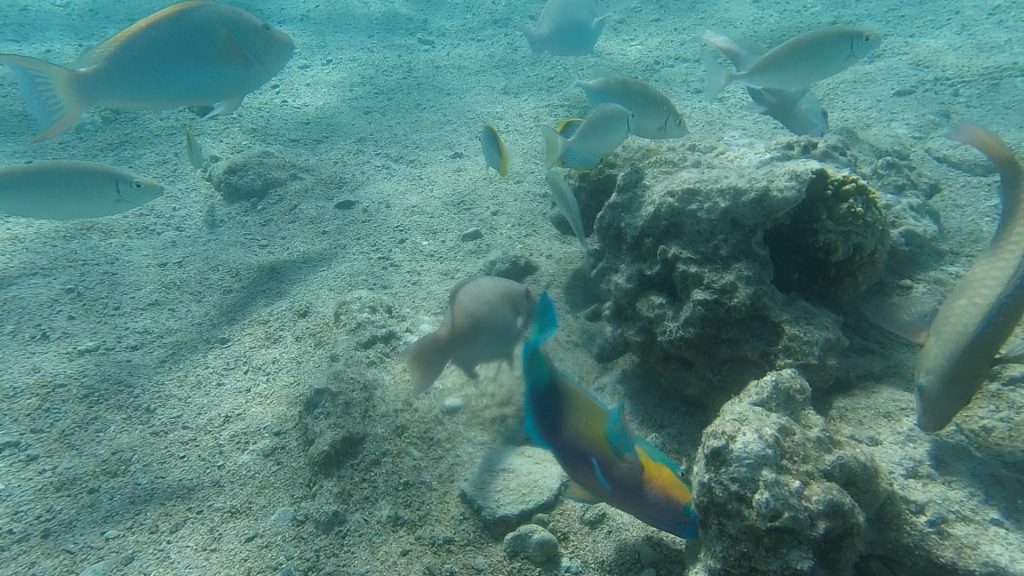
Be vigilant. Often, when we see an interesting fish, we start swimming after it, forgetting about caution and depth.
Where’s the best place to snorkel
Of course, it is better to snorkel where there is beautiful underwater fauna (Red Sea, US Virgin Islands, Palau, etc.) and high water density (Red, Mediterranean, Adriatic, Ionian Seas).
The high salt content in the last list is a paradise for people who are not good swimmers. For example, I practically cannot swim, but in the Red Sea I swam calmly, as if I had been swimming since birth. Moreover, to drown there – you need to try. I made incredible efforts just to dive under the water – the water element offered the strongest resistance.

It is important to research information about the presence of underwater currents, which you may not be able to handle, especially if you are not a good swimmer.
Also, read up on dangerous fish and other inhabitants of this underwater area so that you don’t come into contact with them when you encounter them while diving.
Shooting underwater
You can use a variety of equipment to shoot underwater. Let’s quickly go through the basic methods that I know of.
- Waterproof camera – there are dozens of cameras on the market that are claimed to be waterproof. Usually they keep up to 10 meters under water, which is enough for snorkeling, but the price does not correspond to the quality. Nowadays phones take better pictures. Note that a waterproof camera for underwater photography and a waterproof camera are radically different things!
- Photography and video shooting on a cell phone in a waterproof case, which many people indulge in in Egypt. Everything is simple – order an inexpensive phone case from the Chinese (2 – 4 dollars per piece), insert the phone into it and shoot under water for Instagram. The main thing is to make sure in advance in the reliability of a particular copy of the case, putting inside dry toilet paper and testing without the phone. For amateur snorkeling is also enough. It remains only to choose the right phone for traveling.
- Action cameras with an aqua box are a great way to go. A good action camera with a price of 100 – 300 dollars complete with a protective underwater box shoots video in 4k at 60 fps, thanks to which it is still possible to pull out beautiful still images as photos (in the post – still images from 1080p video). Personally, I opted for this option for myself when I bought the inexpensive Chinese SJcam SJ7 for $170 in 2018.
- Photos and videos taken with a camera in an aqua box are a professional option. If you want to get the best possible result, you should choose a camera and then buy an aqua box for it. A branded protective box costs from 1000 dollars and more, but it is a guarantee of protection from water of expensive photographic equipment. But they also give sometimes punctures, as a result of which the technique fails.

Answers to questions
I too can be interested in finding information about what kind of beast I met underwater. Unfortunately, like my readers, most of them are not oceanologists, so I have to search the Internet. On different sites there is a huge number of catalogs and classifiers of fish with illustrations, but I have not found a universal for myself. To determine what kind of character I met, I use several resources at once and try to identify it visually.
These are the sites:
http://www.sea4you.ru/knowledge/atlas/morskie-rubu
http://sheric.ru/fish/fotopoisk.html
http://argus.aqualogo.ru/sea-fish
http://www.oceanlight.com/fish.html
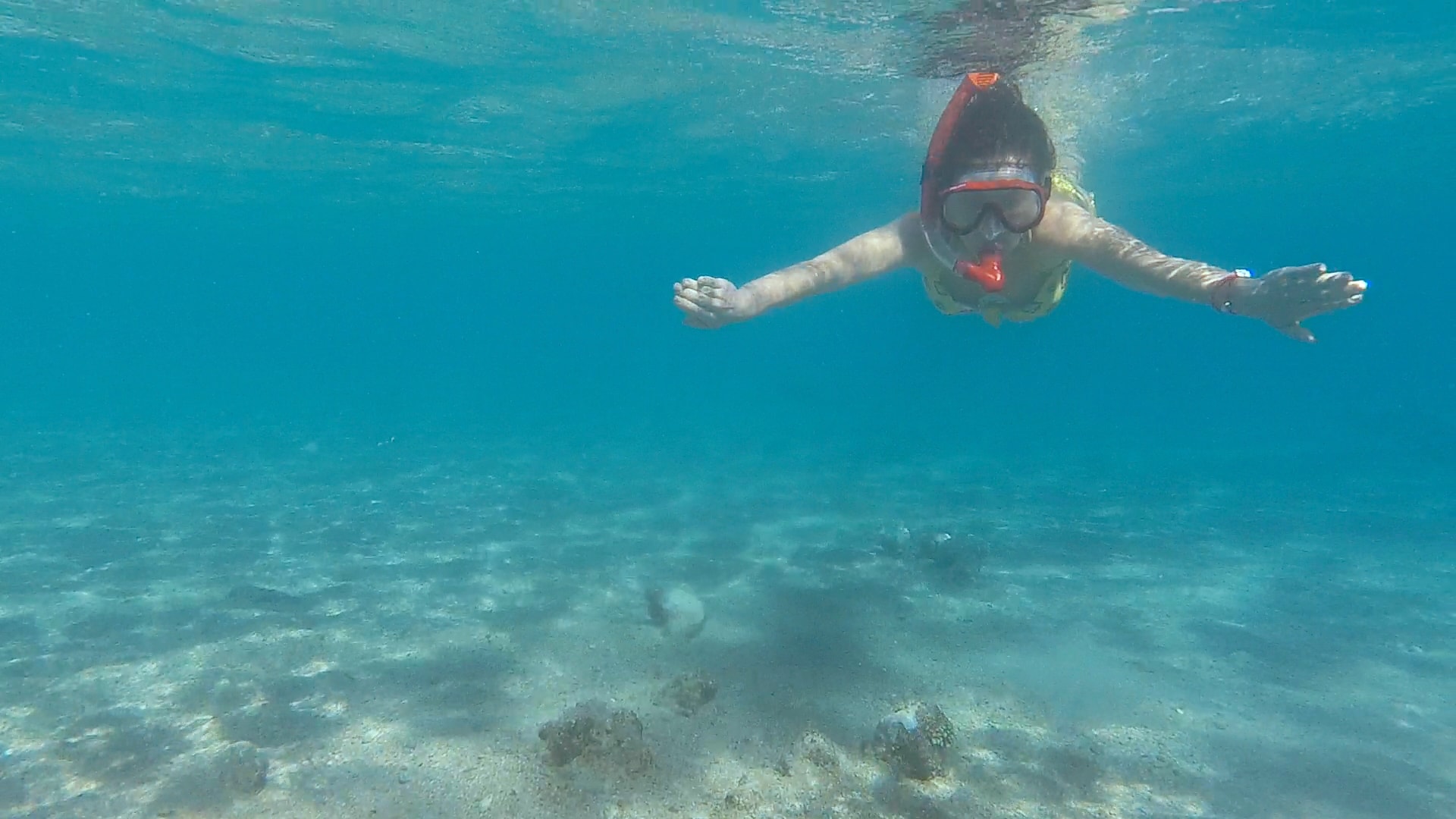
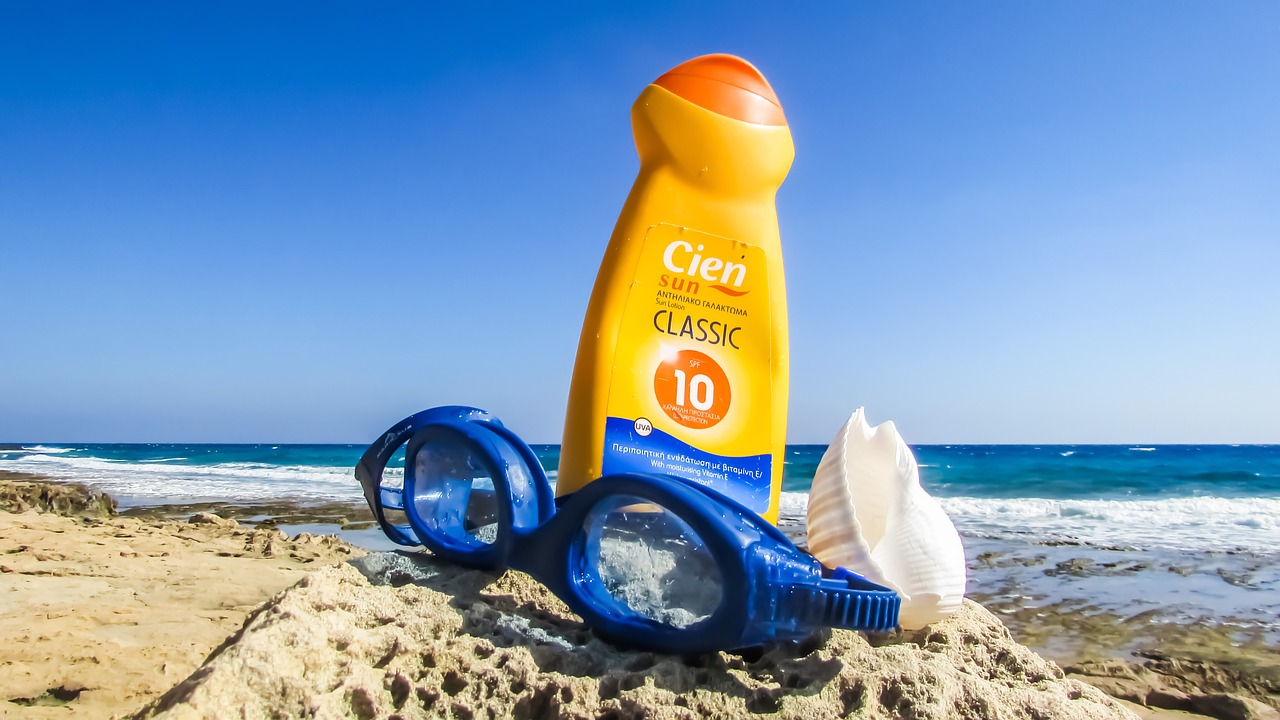


Leave a Reply
Want to join the discussion?Feel free to contribute!